Vietnam Rising Economy of Southeast Asia
Vietnam once considered as an isolated country is now a middle-income country with a dynamic, enterprising and young population and an increasingly important U.S. partner. In the year 2023 the President of USA and the then General Secretary Nguyễn Phú Trọng agreed to elevate the U.S.-Vietnam relationship to a Comprehensive Strategic Partnership. Ever since Vietnam joined ASEAN in the year 1997 its role in regional diplomacy and development is visible and its foreign policy has been successful in establishing strategic partnerships with Japan, China, India, Russia and other countries. Vietnam is consistent in its policy of multiple partnerships in spite of maritime security challenges in the South China Sea and disputes over management of the Mekong River.
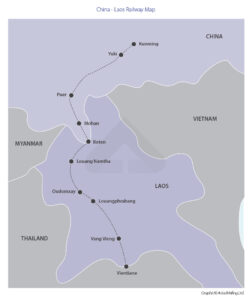 Credit;ASEANBriefing
Credit;ASEANBriefing
Vietnam’s HSR Infrastructure & Economy
In the year 2010 a proposal was initiated to construct a 1,541 km high-speed rail (HSR) which would connect the two economic centres namely Hanoi and Ho Chi Minh City (HCMC) curtailing travel time to less than six hours. The HSR project was then estimated to cost US $ 60 billion roughly equivalent to two-thirds of Vietnam’s Gross Domestic Product in 2009.
In the post-COVID economic recovery Vietnam’s Prime Minister Pham Minh Chinh shared his vision of promoting mega-infrastructure projects including the Long Thanh Airport and the 500 kV Quang Trach-Pho Noi transmission line .In the year 2023 the Politburo issued Conclusion No. 49-KL/TW on the orientation for the development of Vietnam’s railway transportation system by 2030 with a vision for 2045. Prime Minister Pham Minh Chinh tasked the Ministry of Transport to examine the political, legal and practical outlook for the project emphasising the need for comprehensive research.The 1,541 km long railway will serve twenty cities and provinces and address demand for efficient transport and logistics. Prime Minister Pham Minh Chinh has stressed adopting of an innovative and strategic approach to complete the railway by 2035. The HSR project is designed to use the most efficient and shortest routes operating at speeds of 350km per hour.It will complement existing north-south transport routes, including National Highway No.1, Ho Chi Minh Highway and the under-construction expressway while focusing on passenger transport and supporting fast freight and defence requirements.The existing railway will also be upgraded for freight transport as well . Vietnam’s Prime Minister Pham Minh Chinh invited Chinese business firms to invest in developing the country’s rail sector as Vietnam has not fully utilised its rail system which includes over 2,600 kilometers of rail and 300 stations.
The Ministry of Transport proposed investing in an electrified high-speed railway (HSR) with a designed speed of 350/kph along a length of 1,541 kilometers, double tracks with a gauge of 1,435 mm and estimated investment of approximately US$ 67 billion.This rail track will include 23 passenger stations and 5 freight stations connected to key cargo hubs. The route will commence from Ngoc Hoi station in Hanoi traversing 20 provinces and cities and terminate at Thu Thiem station in Ho Chi Minh City. Two existing rail lines in Vietnam will be converted to standard gauge as prevalent in China, whereas one such line will be built entirely from scratch on the premise that harmonisation of rail infrastructure will improve rail freight transport as Vietnams’s bilateral trade with China amounted to US $ 145 billion US dollars last year .Vietnam’s new standard gauge railways will be part of a route that connects China’s Kunming with Singapore.
Existing Rail Infrastructure
Vietnam possesses a rail network that spans approximately 2,600 kilometers and includes several key lines that connect major cities and industrial hubs. The Hanoi-Ho Chi Minh City railway line serves as the backbone of this network and facilitates the movement of goods across the country. Aging tracks and outdated technology hinder efficiency and safety which are vital for an efficient rail passenger and freight network.
Advanced Technology in Logistic Rail Ecosystem
Prime Minister Pham Minh Chinh has highlighted the necessity of a modern, digitalised management plan, rail workforce training, technology transfer and the development of a railway industry ecosystem . The HSR construction will begin in 2028 and will comprise of five depots for passenger trains and four depots for freight to enable efficient passenger service and integration of freight transportation into the high-speed rail network. Vietnam plans to construct extensions in the northern part of the country to connect its high-speed rail with China’s network thereby expanding international transport links and freight transit .
Reducing Vietnam’s Carbon Footprint
The high-speed railway project is likely to generate fresh employment and business opportunities and foster economic development in regions along the route. The rail project is expected to reduce Vietnam’s carbon emissions by transitioning to electric trains thus converting the country’s transportation system as sustainable and environmentally friendly and minimising its carbon footprint.
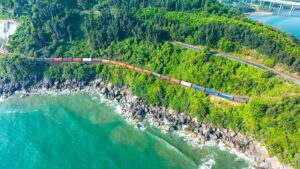 Credit;RailFreight.com
Credit;RailFreight.com
Vietnam Railway Infrastructure Costs Compared Regional HSR
Vietnam’s long and narrow geography underscores the pressing need for an efficient railway system. The national railway network spans more then 2600 kilometres and is a relic of the French colonial period with no significant expansion .The outdated one-meter gauge which comprises over 80% of the rail network is used in very few countries. Current train speeds remain upto of 100km/h for passenger trains and about 50-60km/h for freight trains being markedly lower then those in the region. To compare maximum train speed in Thailand is 120km/h soon to be 250km/h when the Bangkok–Nong Khai high-speed rail line becomes operational .The maximum train speed in Laos is 160km/h with the recent completion of the China-funded Boten–Vientiane railway. China’s rail network continues to expand and concerns abound in Vietnam of becoming isolated from the Asian transport infrastructure.
The current HSR proposal includes a passenger line with a speed of 350 km/h and a capacity of 364,000 passengers per day whereas projected demand by 2050 is estimated to be only 40 per cent of that capacity. Doubts over cost-effectiveness of an HSR line exceeding 800 kilometres linger on as projected cost per kilometre for the North-South HSR is approximately US$ 45.6 million significantly higher than the Beijing–Shanghai HSR which costs US$ 26 million per kilometre despite similarities in distance and terrain. The average cost per kilometre of Chinese HSRs is around US$ 21 million for a 350 km/h line and US$ 17 million for a 250 km/h line.
The country’s track records with metro projects in Hanoi and HCMC, where cost overruns rose to US$ 3.4 billion almost double initial estimates, highlights the risk of cost overruns which has not been reassuring for investors .In Indonesia the Jakarta-Bandung HSR, initially estimated at US$35 million per kilometre ended up costing US$ 52 million per kilometre when it was completed in the 2023 falling four years behind schedule.
Subsidies
Moving from the initial investment the likelihood arises that the HSR will need to be subsidised to meet operational costs .Such operational subsidies are often substantial convincing high income countries like Australia and the United Kingdom to abandon HSR plans .
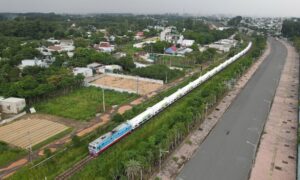 Credit;VNEXPRESSINTERNATIONAL
Credit;VNEXPRESSINTERNATIONAL
Laos-Vietnam Railway Proposed Project
The Laos-Vietnam railway is a proposed railway project aimed to materialise Laos’ ambitions to attain regional logistics hub status. The port will allow land locked Laos crucial access to the South China Sea and the markets of South Korea and Japan. Laos inaugurated the Laos-China high-speed railway in 2021 as a first of its kind in Southeast Asia.
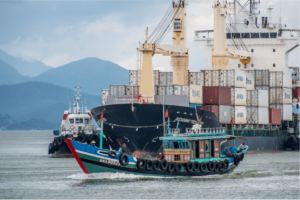 Credit;ADB SEADS
Credit;ADB SEADS
The Laos-Vietnam proposed railway route would connect the capital of Laos Vientiane to the port city of Vung Ang in Vietnam. The 555 km track estimated to cost US$ 5 billion will facilitate trade with ASEAN countries as Laos desires to evolve into a logistics hub. Construction of the rail line will ultimately connect Vientiane to Vung Ang’s deep seaport being the closest port . The line would connect with the Laos China railway extending the catchment area for freight shipment to Northern Laos and South China and develop linkages to Vietnam’s North-South railway to open prospects of a Hanoi-Vientiane route.
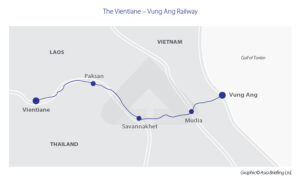 Credit;ASEANBriefing
Credit;ASEANBriefing
Access to South China Sea
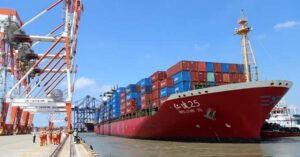 Credit;The Laotian Times
Credit;The Laotian Times
Vietnam’s Vung Ang deep-sea port (Lao-Viet International Port) plays a vital role in boosting land locked Laotian economic activity through maritime trade and transportation exchanges. The Laos government owns a 60 percent share in the port which provides Laos access to South China Sea, Central Vietnam, Northeast Thailand , South Korea, China and Japan. The Vietnamese government has authorized a 50-year concession to Laos. Currently the port can accommodate cargo ships of up to 50,000 deadweight and container ships of up to 2,000 twenty-foot equivalents (TEU). By 2030 Vung Ang deep sea port is expected to handle over 20 million tons of dry bulk cargo. The Vietnamese maritime policy makers are pursuing industry specific investment focusing on the Vung Ang economic zone on the rationale that sea-based or blue economy is necessary for Ha Tinh’s economic breakthrough.
Upgrading Rail Infrastructure
Countries with medium or long routes exceeding 800 km technically opt for 350 kph. Russia is constructing a 360 kph line between Moscow and St. Petersburg rather than upgrading its existing 160 kph line and Vietnam’s north-south railway for linking Hanoi and Ho Chi Minh City as a 350 kph line could attract 12.5% more passengers compared to a 250 kph line. Although building a 350 kph line costs 8-9% more due to higher infrastructure costs upgrading from 250 kph later would be complex.
Indigenous Resource Mobilisation
Involvement of foreign contractors in the HSR is conditional on utilising domestically produced goods and services and allowing local companies to contribute to the project’s construction valued at $ 34 billion. Vietnam’s construction industry is capable of building roads, bridges, tunnels and cable-stayed bridges operations, maintenance and eventually localize the production of replacement parts. Vietnam plans to develop its north-south HSR through tapping domestic funds and technology with a view to reduce dependence on foreign loans and ensure better control over construction, technology transfer, and long-term operations.
Regional Logistic and National Multimodal Connections
The HSR network incorporates vital routes that link Vietnam to international markets. The North-South railway connects with China enhancing trade opportunities. The Lao Cai-Hanoi-Haiphong route provides access to seaports. Vietnam Railways Corporation remains the main and state owned operator controlling the rail infrastructure. Rail no doubt presents a cost-effective alternative to road and air transport.
Digitalisation & Rail Logistics
Enhanced use of advanced digital technology can transform rail logistics by enhancing operational efficiency as advanced systems enable real-time tracking of shipments, providing accurate data on location and status. Such scheduling through automation and transparency reduces delays and improves customer satisfactions as well as optimize train routes, spurs competition , minimizes fuel consumption and operational costs ensuring anticipated deliveries by establishing a reliable logistic supply chain . Digital solutions made available by private sector entities such as JUSDA employ real-time monitoring to track temperature, humidity and air pressure during transit ensuring safe transportation of perishable and sensitive goods. Such private logistic operators assist in speedy customs clearance systems to expedite cargo transfers thereby reducing waiting times at borders.
Sustainable Practices of Rail Transportation
Trains consume less energy per ton-mile thereby reducing carbon emissions and HSR systems further enhance environmental benefits by incurring significantly reduced operational and maintenance costs and energy consumption thereby reducing environmental degradation.Another environmentally friendly way to avoid land clearance and complicated estate acquisition especially of agricultural land is through elevated rail systems.
Authored by Nadir Mumtaz
Credit/Sources :
https://www.jusdaglobal.com/en/article/vietnam-rail-logistics-future-development-strategies/
https://www.vietnam-briefing.com/news/vietnam-encourages-china-investments-expertise-collaboration-rail-infrastructure.html/
https://vir.com.vn/north-south-high-speed-railway-to-be-completed-by-2035-112601.html
https://www.railway.supply/en/high-speed-railway-to-connect-north-and-south-vietnam-for-67-billion/
https://www.britannica.com/video/army-all-South-Vietnam-North-Vietnamese-Socialist-1975/-111185
https://www.usip.org/publications/2024/04/current-situation-vietnam

Leave A Comment